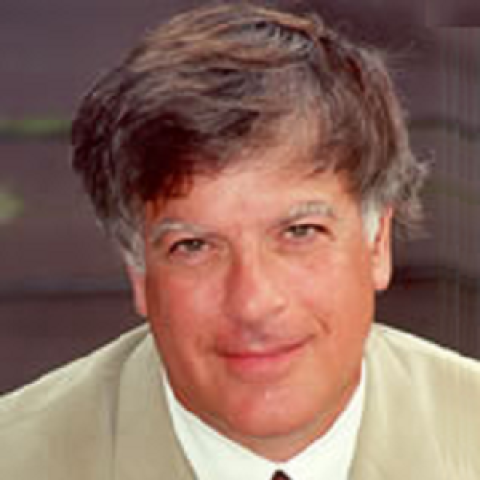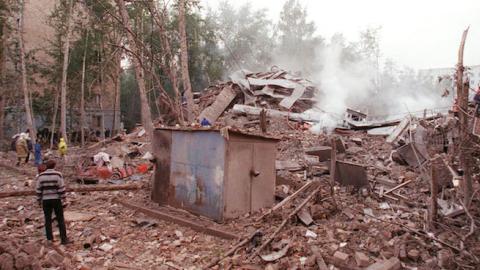I was in Moscow when the buildings were blown up killing 300 persons and I was immediately suspicious of the explosions. They were too convenient for Yeltsin and his corrupt entourage. Moscow had also been awash with rumors that a massive provocation was coming. But I became convinced that the bombings were a false-flag attack when a fifth, unexploded bomb was discovered September 22 in the basement of a building in Ryazan, southeast of Moscow, and local police arrested three persons who turned out to be not Chechens but agents of the Federal Security Service (FSB).
On January 11, Senator Marco Rubio (R., Fla.) raised the issue of the 1999 apartment bombings during the confirmation hearings for secretary-of-state designate Rex Tillerson. Only John McCain (R., Ariz.), in a much more guarded fashion, had raised the issue of the apartment bombings previously.
The 1999 bombings, 18 years after they occurred, however, are not a peripheral issue. They pose the question of whether Putin is a terrorist. This is a question that the U.S. is in no position to ignore, particularly insofar as we are on the verge of joining Putin in a partnership against terrorism.
Many of the doubts about the apartment bombings can be resolved through the simple release of documents by the CIA. In July 2016, I filed Freedom of Information Act requests with the State Department, the CIA, and the FBI, seeking documents that bore on the bombings and, in particular, the Ryazan incident and the persons who tried to investigate the bombings who were killed.
On November 30, 2016, I received a response from the State Department that, although redacted and incomplete, demonstrated convincingly that the U.S. government at the time knew far more about the attack that is known as “Russia’s 9/11” than it was ready publicly to reveal. According to a cable on the Ryazan incident from the U.S. embassy in Moscow, on March 24, 2000, a former member of the Russian intelligence services told an embassy political officer that the real story of the Ryazan incident would never be known because “the truth would destroy the country.” He said that the FSB “does indeed have a specially trained team of men whose mission is to carry out this type of urban warfare.” He said that Viktor Cherkesov, the first deputy director of the FSB and a former interrogator of Soviet dissidents, was “exactly the right person to order and carry out such actions.”
On December 14, 2016, I received a response from the CIA. I hoped that CIA documents would supplement my own investigation, particularly of the Ryazan incident. After the arrest and subsequent release of the FSB agents who planted the bomb in Ryazan, the FSB stated that what had taken place was a “training exercise.” When I went to Ryazan in April 2000, no one there with whom I spoke, whether residents of the affected building or the police, believed that what had happened was a training exercise. And if it was not a training exercise but an attempted terrorist act, then the overwhelming probability is that all four of the successful bombings were also carried out by the FSB.
The response from the CIA was unhelpful. Mary E. Wilson, an acting information-review officer, said that the CIA could not even acknowledge the existence of records on the 1999 Russian apartment bombings or the purported training exercise in Ryazan. To do so would reveal activities, sources, or methods as well as “very specific aspects of the Agency’s intelligence interest, or lack thereof, in the Russian bombings.”
In fact, it is obvious that the CIA has documents pertaining to the bombings. The State Department cable shows that the U.S. government was keenly interested in the Ryazan “training exercise.” If a political officer in the embassy was reporting on the incident, it is not credible that the CIA was uninvolved. At the same time, I know from personal contact with foreign intelligence officers that their services were interested in the bombings and fully conversant with the arguments about FSB culpability that I made in my book Darkness at Dawn: The Rise of the Russian Criminal State (2003).
As for the argument that releasing documents would be a danger to national security, it is important to point out that any such documents would be redacted. This would be sufficient to protect “sources and methods.” What is needed in the first instance is the CIA’s opinion regarding the Ryazan incident and the apartment bombings as well as the logic of that evaluation.
The political leadership at the time showed no inclination to assess Russia’s possible responsibility. On February 8, 2000, Madeleine Albright, the secretary of state, testifying before the Senate Committee on Foreign Relations, was laconic in her responses to questions from the chairman, Senator Jesse Helms (R., N.C.). When asked whether there was any evidence linking the bombings to Chechnya, she said, “We have not seen evidence that ties the bombings to Chechnya.” When asked whether the Russian government was justified in accusing Chechen groups of responsibility, she did not hint at the doubts reflected in the State Department’s own reporting. Instead, she said, “Acts of terror, in all their forms, have no place in a democratic society.”
Many years have gone by, but no Chechen has ever been convicted of participating in the apartment bombings, whereas the evidence of FSB involvement is overwhelming. It is time for the CIA to help resolve this issue. I don’t believe that there is a genuine risk to national security in releasing the redacted documents, but the CIA needs to act in order to prevent the far greater national-security disaster that would result from a partnership with Putin in the War on Terror.



















